Gaining more clients is on the top of every personal trainers mind in 2024. A social media strategy is exactly what you need–but where do you even start?
As a personal trainer, you’re working tirelessly to find new business and to satisfy your current clients. You’re also training hard and eating right so that you’re practicing what you preach.
Nobody said it would be easy.
If you aren’t using social media to grow your business, you may just be working harder–not smarter. Instagram and Facebook, in particular, lend themselves to personal trainers looking to gain more exposure and grow their client base.
In this post I’m going to give you a crash course in social media strategy. We’ll cover all the basics, and even an added bonus at the end.
Why Plateauing Personal Trainers Need Social Media
Before we get started with the what of social media strategy, I want to make sure you understand why social media is such a powerful vessel to grow your client base.
Expressing Your Expertise
Nobody’s going to know that you’re a highly knowledgeable, dedicated, results-oriented personal trainer if you can’t show them.
Social media platforms provide the canvas to establish yourself as a top fitness expert in the industry. More importantly, it can put you on the map (so-to-speak) in your local marketplace.
It’s not necessarily about selling a product directly.

By sharing tips, articles, videos, and workout motivation, you’ll spread your reputation amongst your social network and stay top-of-mind.
Branding yourself as a fitness guru will ensure that when people think of fitness, exercise, or nutrition, they think of you.
Fitness-based groups and communities are all over social media–particularly Facebook–with an audience that is eagarly awaiting your expertise.
Unlike a classic television commercial, a social media post allows you to directly communicate with your target audience. Answer fitness questions and take part in meaningful conversations–painting yourself as even more of an industry expert.
By growing relationships in these groups, you’ll be afforded a variety of opportunities–whether it’s acquiring new clients or reataining current ones.
Keep in mind, each post you make is a reflection of your brand and should depict you as the leading fitness expert you are.
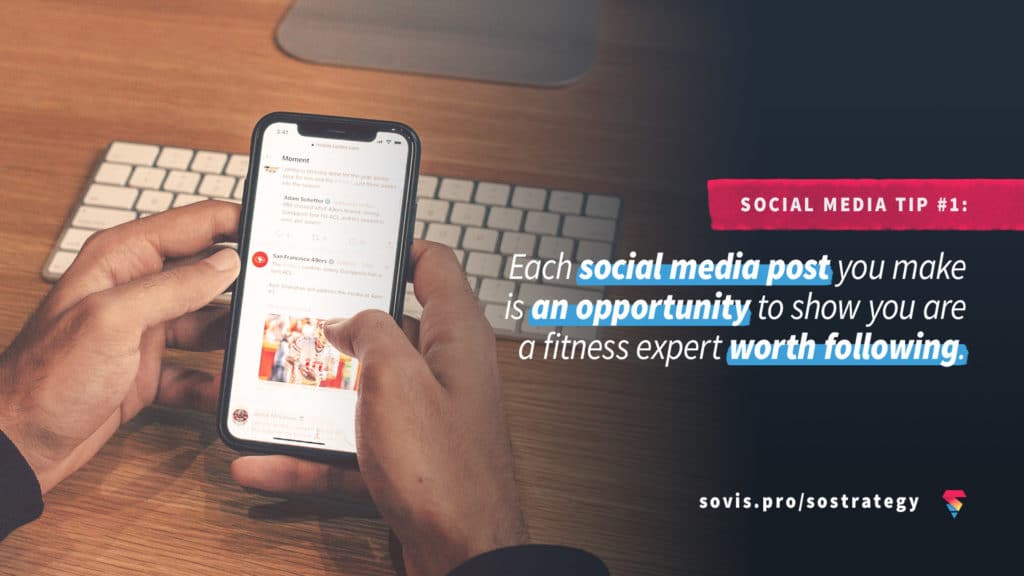
Customer Service = More Income
Harvard Business Review says unresponsive businesses on social media adversely hinder their bottom line. Conversely, the customers who receive a prompt response are generally far happier to spend more money with the brand–even if the initial comment was a complaint.
It’s a two-pronged approach. You’re both marketing yourself and providing customer service.
Since customer service is one of the best ways to keep clients satisfied, a social media presence is a means to retain current clients and further increase their impact on your business.
What’s more important is that having a consistent dialogue with your clients over social media deepens their relationship with you. And while people initially sign up with you for the results, they stay because of your relationship with them.
With an established loyal client-base, you won’t be continuously worried about acquiring new business.
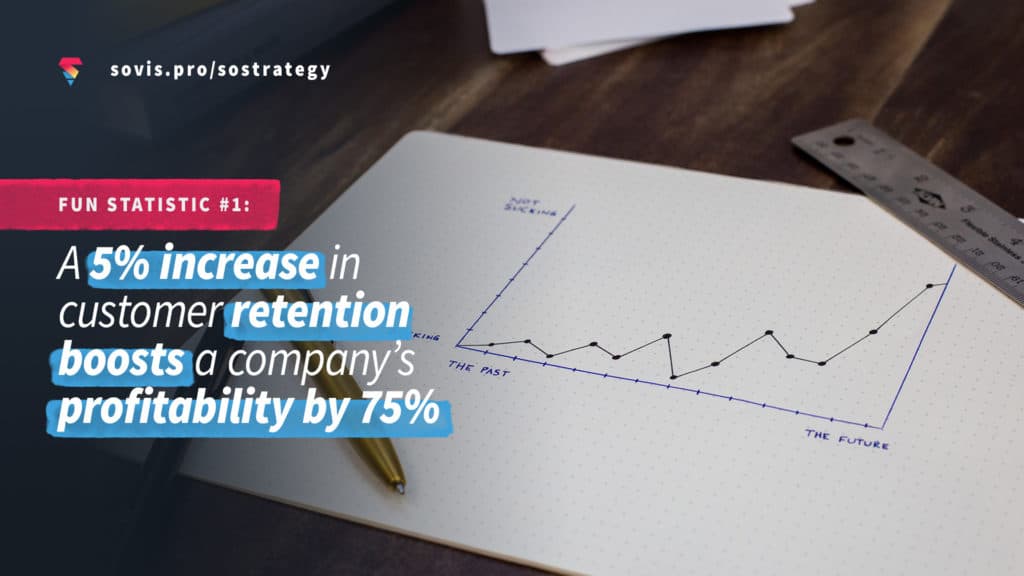
In fact, a 5% increase in customer retention boosts a company’s profitability by 75%, according to Brain & Company.
Networking for Exponential Growth
Part of your audience should be other fitness and health-based businesses. Building a network of closely aligned brands can be mutually beneficial. Meaning you won’t be stuck doing everything alone while getting more eyes on your brand.
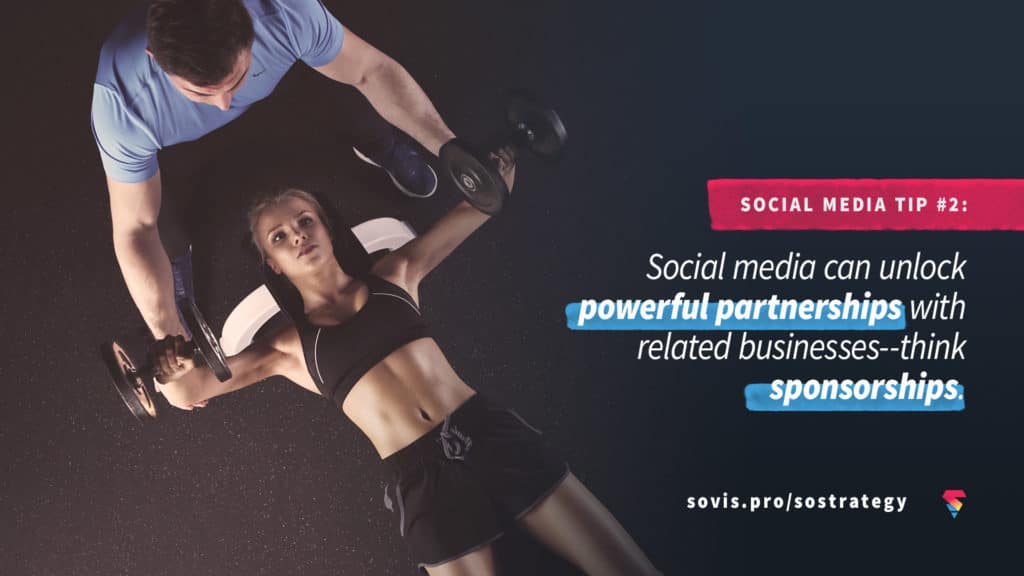
Nutritionists, chiropractors, massage therapists, and supplement stores are ideal partnerships for you. Start by simply liking and sharing each other’s content, post positive reviews, tag one another in posts, or interact in comment threads.
You can co-promote a social media campaign with a local supplement store offering a free consultation with a purchase of a protein bar, for instance.
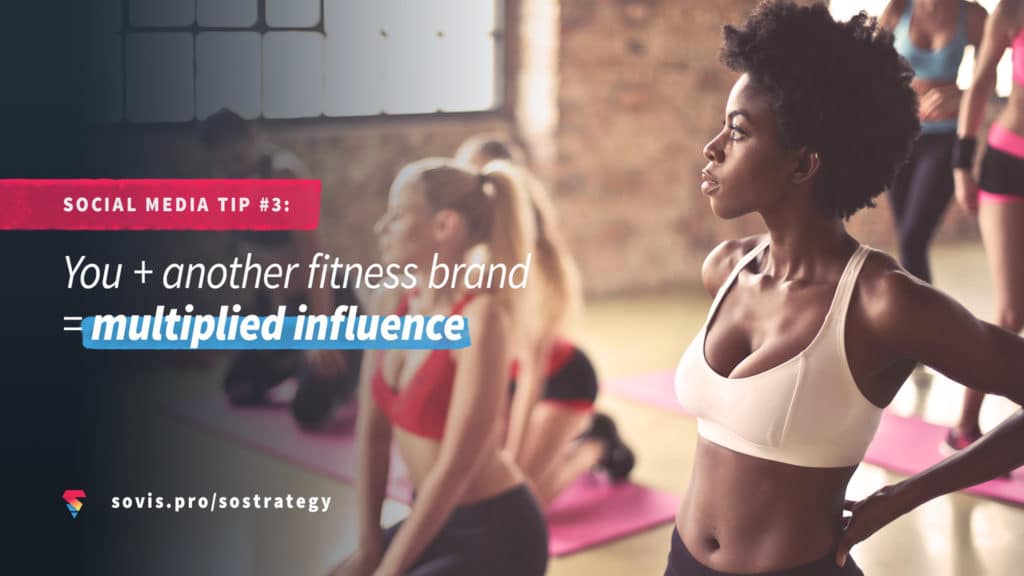
Ideally, you’ll make connections with social media influencers with large followings who’ll help to vastly grow your business. The positive words of a social media heavyweight will do plenty to sway potential clients in your direction.
This type of social “networking” has an exponential growth effect. Instead of growing your audience by your own effort, you’re leveraging the efforts of others who have your target audience’s attention.
Make sense? Great, let’s dive deeper.
Platforms That’ll Grow Your Social Media Muscle
Now, there are a lot of social media platforms out there. The most popular social networks are where people tend to start, but I want to break them down for you one-by-one.
A strong personal training marketing strategy rests upon impressive visual content. In the world of social media, visual content is king.
The human eye processes information incredibly fast. As people are furiously scrolling through their social feeds, you need to have something that grabs their eyes and makes them stop dead in their tracks. This is what I call thumb-stopping power. (Because they’re scrolling with their thumbs while on their smartphones…)
On top of that, people need to see with their own eyes that you’re a proven commodity that can promise the results they want.

Instagram, as a visually driven platform, is a boon to personal trainers.
One thing you need to be aware of:
While 80% of Instagram users follow one or more businesses online, 70% of Instagram posts aren’t seen.
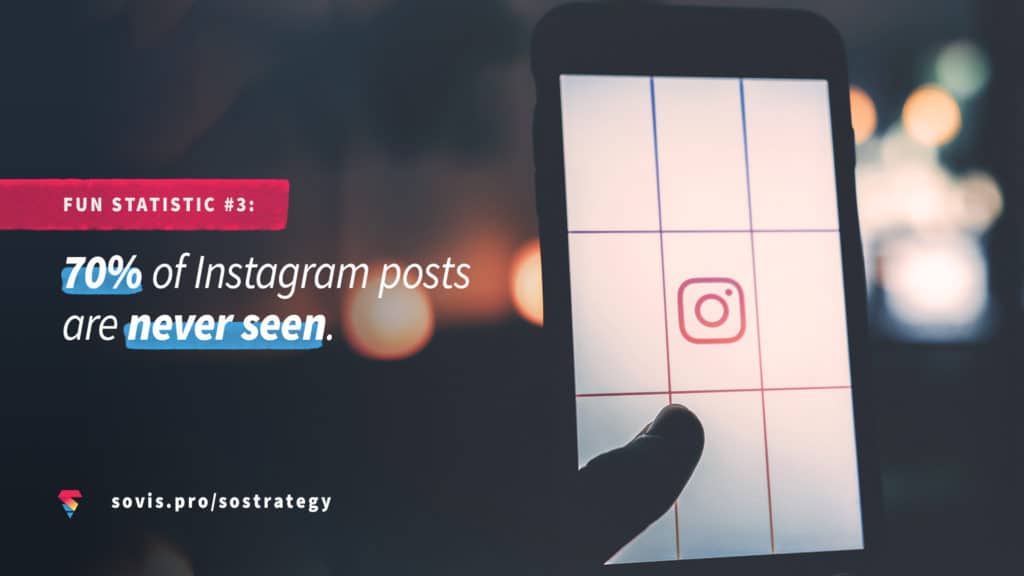
Posting awesome content is what feeds the Instagram algorithm, encouraging shares, likes, comments, and other activities that’ll land your posts at the top of user feeds.
Excellent execution achieves the best results–starting with the quality of your images. The graphics and photographs you post have to meet a high standard set by the other hundreds of thousands of personal trainers posting captivating visuals.
Showcase what’s unique about your personal training business with your eye-catching photographs.
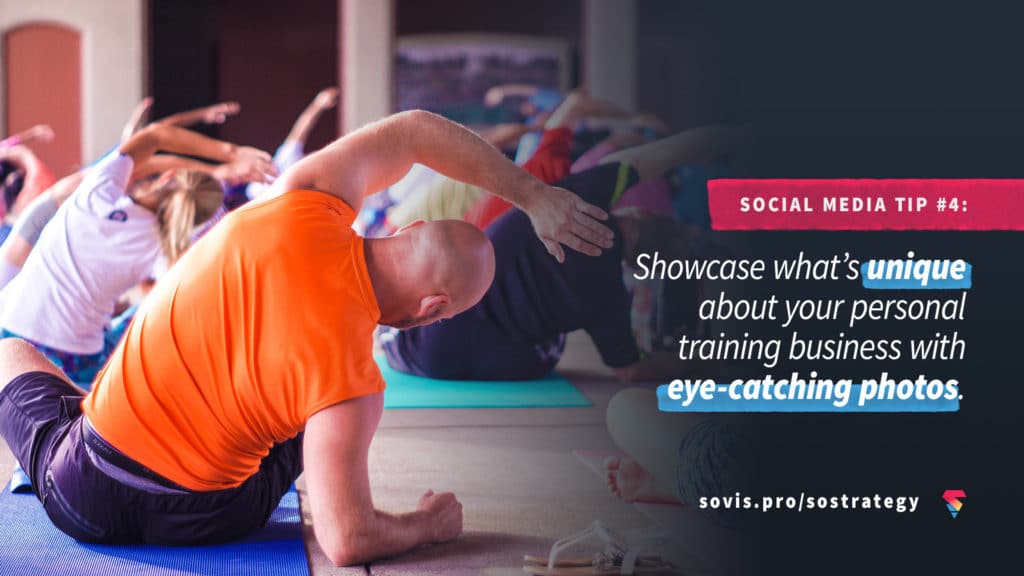
Highlight your facility or workout space, equipment, and methods used with clients. Design graphics with motivational quotes as well as health and nutrition tips. Videos are optimal for exercise demos and client testimonials.
Bonus: Get 10 free social media graphics that you can use today to grow you followers and make your account look like one worth engaging with!
Instagram Hashtags are Crucial
One of the keys with Instagram is optimizing your hashtags. It’s a science in itself with a delicate balance. You have to find hashtags that are both trending and relevant to your brand.
Market research is the best way to find the most suitable and effective hashtags. Visit other personal trainers’ pages with a lot of followers. See what hashtags they’re using; probably stuff like:
- #NoPainNoGain
- #InstaRunners
- #WorkOutMotivation
- #FitFam
Enter hashtags in Instagram’s search field to assess its popularity and relevance.
Hashtags will help you build your following. They categorize your posts into subsets so people outside of your current followers can see what you’re posting.
Be creative with Instagram hashtags. Don’t pigeonhole yourself into only posting exercise and motivational hashtags. As a fitness professional, you can pivot toward nutrition, lifestyle, or even life advice.
You want to make sure you’re adding between 15-30 hashtags per post. Yes, you read that right… between fifteen to thirty hashtags.
The maximum amount of hashtags Instagram will allow is 30, and studies have shown that a minimum of 11 hashtags can have a significant increase in engagement (likes and comments). And our friends over at Agorapulse have found that using the maximum of 30 hashtags can increase post likes by up to 135%!
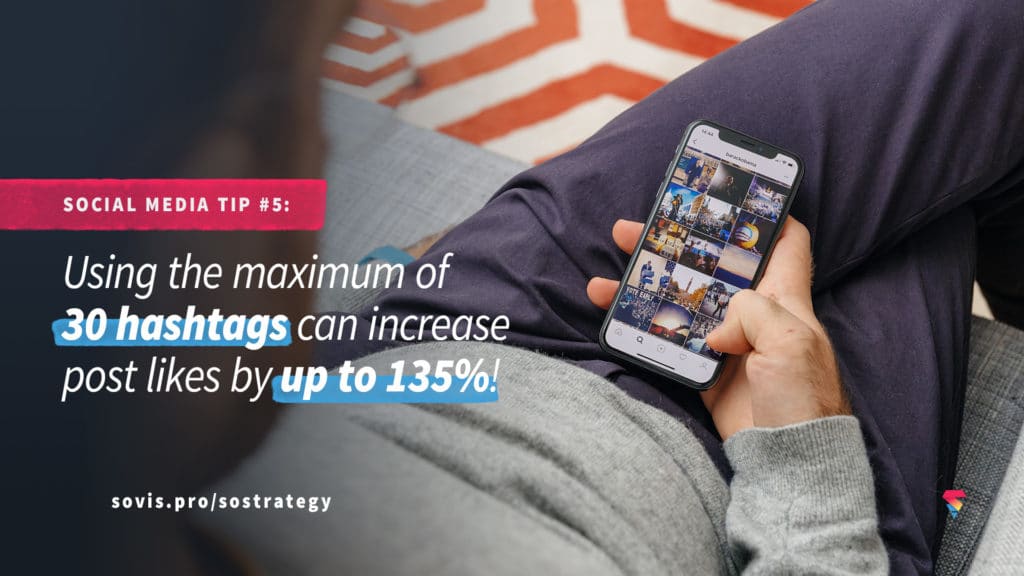
Tag Others to Boost Visibility
Tag popular fitness and lifestyle influencers in your posts. If you do this sparringly, and with tact, they will appreciate you mentioning them.
One shout out from them could mean the world to your reach. 70% of millennials worldwide depend on peer recommendations before reaching purchasing decisions, making them very open to online influencers.

That’s not to say spamming influencers with tags and messages is a good idea. Instead, take part in these popular Instagrammer’s contests and promotions while engaging with their content. When you scratch somebody’s back, they’ll be more inclined to scratch yours.
Get Your Bio in Shape
Your Instagram bio and profile picture are the first two things your audience will see on your page. You have 150 characters to let people know your purpose and personality.
If you have a website, you definitely want to link to it in the appropriate place in your bio.
Pro-tip: Add a call to action in your bio, where visitors can use a hashtag (specific to you) to be featured on your page.
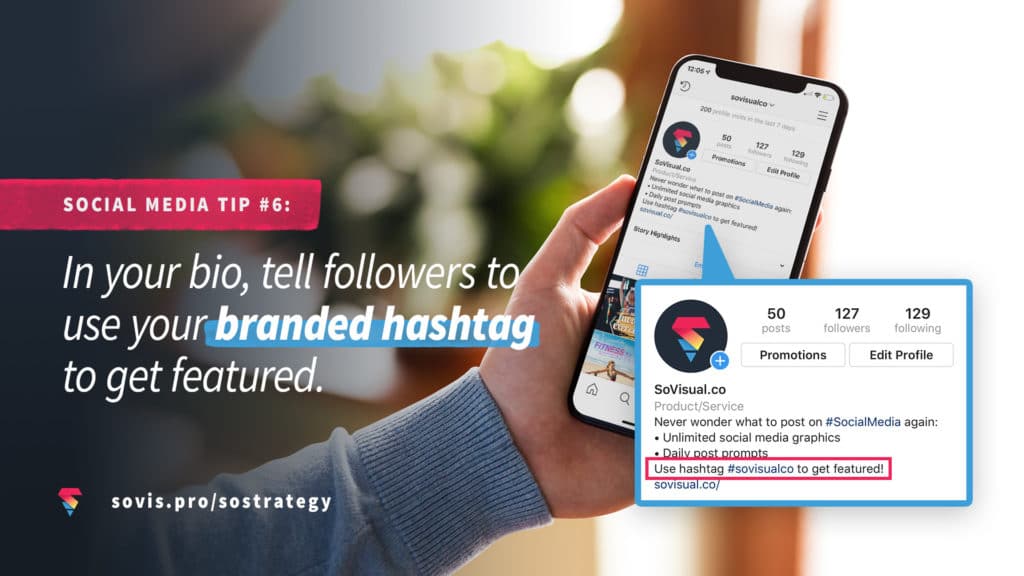
Instagram Posting Frequency
Buffer claims that brands see the most success when posting on average 1.5 times per day on Instagram. That’s basically posting daily with the occasional double-day.
Daily posts jive well with Instagram’s algorithms and place your content at the top of followers’ feeds. Additionally, the goal is to stay “top-of-mind” for your audience—you want to keep your visibility consistent so as to solidify your place in their minds as a go-to fitness and health resource.
On Facebook, it’s best practice to make a separate brand page with a detailed profile allowing audiences to learn about you, your qualifications, and your core values. There’s no character limit on your bio or ‘story’ so you have room to tell a captivating and expanded story.
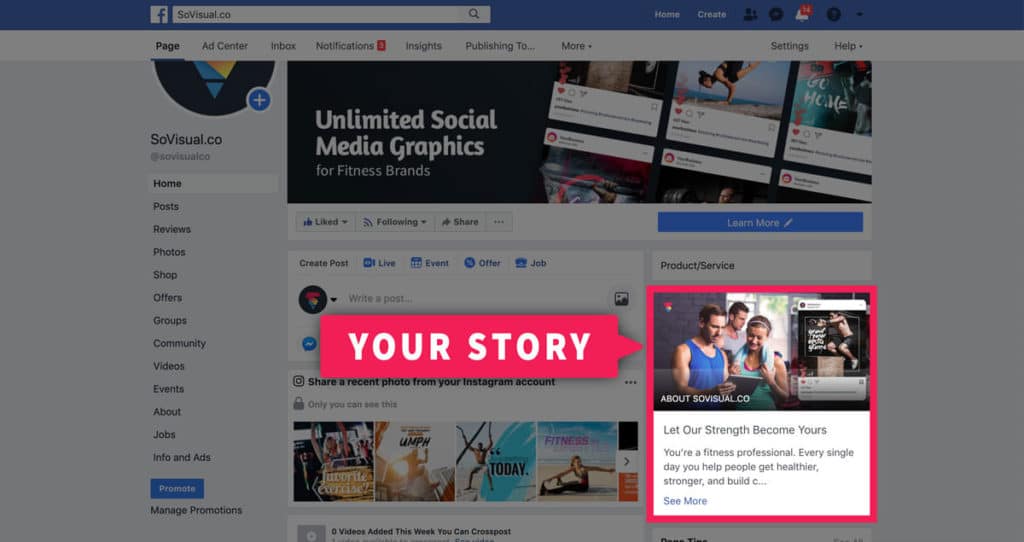
Also, hammering out all the details in your profile lets people know other relevant information such as hours of operation, address, phone number, e-mail, and any external links. This should be business related information only, not personal information.
Video Content is Fire on Facebook
Video content tends to get the most engagement on Facebook. According to Social Bakers, videos can promote a 135% increase in organic reach for your page.
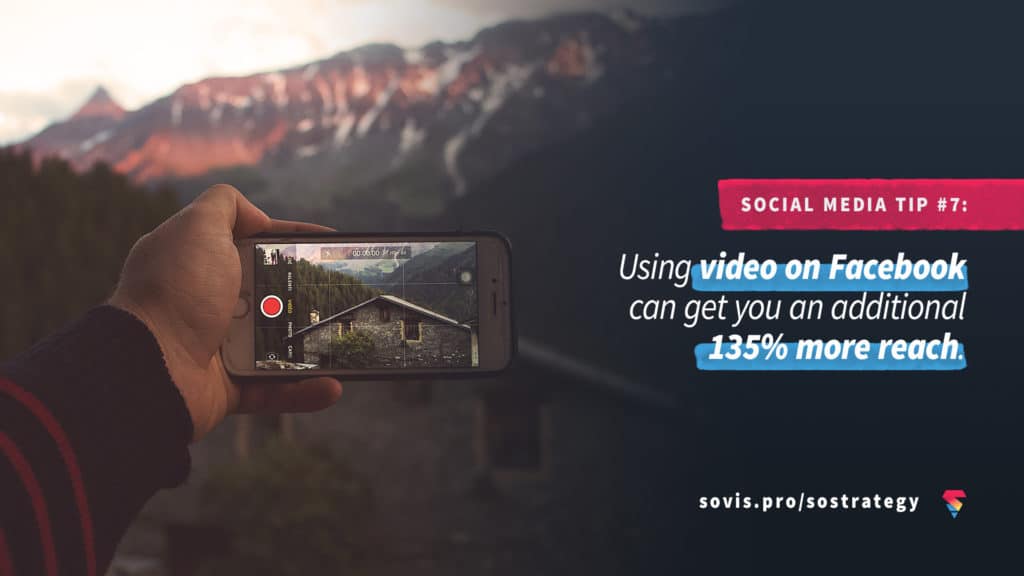
It’s a perfect platform for success stories/testimonials and routines while showing off your personality–after all, people want to work with personal trainers whom they actually like.
Even if you can’t produce your own, sharing another fitness or nutrition professional’s video is both a great way to cross promote and promote engagement on your page.
Facebook Groups Build Community
Facebook has a group feature that drastically enhances your reach. You can make a post on your brand page and share it with an unlimited number of groups. These groups frown upon spamming and poor content, so be thoughtful about your posts.
Groups and communities are usually private on Facebook and membership regularly need to be approved by an admin. These groups share commonalities with hashtags in that they open your page up to an audience outside of your friends and followers.
Be sure you only join groups whose topics are relevant to fitness, nutrition, lifestyle, and bodybuilding. Posting your fitness content in a group about power tools is a one-way ticket to getting kicked out.
Joining local marketing groups on Facebook connects you with a whole host of nearby businesses. Even if you connect with employees of a bank or law firm, many workplaces embark on company-wide wellness initiatives. You’d be surprised at what kind of opportunities can be presented in these networking groups.
Posting Frequency for Facebook
While consistency is essential to posting efforts, according to Ahalogy, one Facebook post a day is enough. Posting more might cause your audience to ignore you, unfollow your posts, or unlike your page.
Once you start to gain some traction on Facebook—meaning your audience is growing consistently, and you’re getting high amounts of Likes and Comments on each post—then you can increase your posting frequency.
When starting out, just stick to one post per day.
The average Twitter user follows five businesses. Over 80% of those users have mentioned a brand in a Tweet, while 54% of them have taken some kind of action when a brand was mentioned in a Tweet, as per a survey performed by Twitter.
When your business has a Twitter account, focus more on engagement instead of hawking your services. Provide customer support in the form of nutritional or exercise advice.
Twitter acts as a search engine for relevant, industry-related conversations. Find those hot-button issues and humanize yourself to an audience that can help build your business.
One of the best ways to start a conversation is by using the “Retweet with a Comment” feature when you see great fitness-related tweets. The more enticing and engaging the tweet, the more engagement you’ll receive.
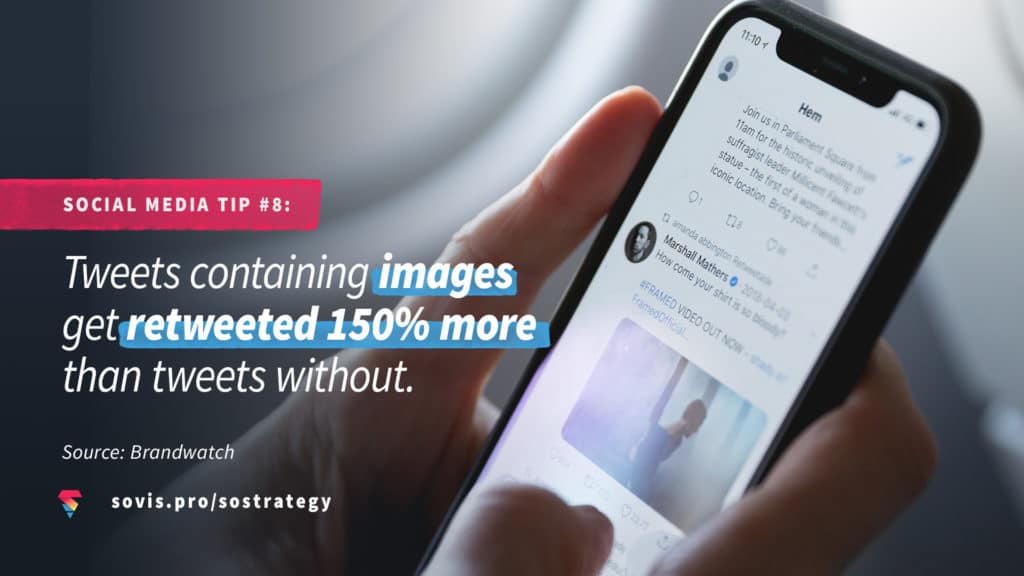
Brandwatch reports that Tweets containing images get retweeted 150% more—so again using images in your social media posts is vitally important.
Pumping Up Your Profile
Just as with Instagram and Facebook you want to craft a great bio on Twitter. Don’t be affraid to add a hashtag or two to help surface your profile in search.
On top of your bio, your profile picture is an essential facet of a comprehensive Twitter profile. Don’t use a logo with a tagline. Twitter’s a much more personal platform, so followers want to see a photo of you instead of a brand representation.
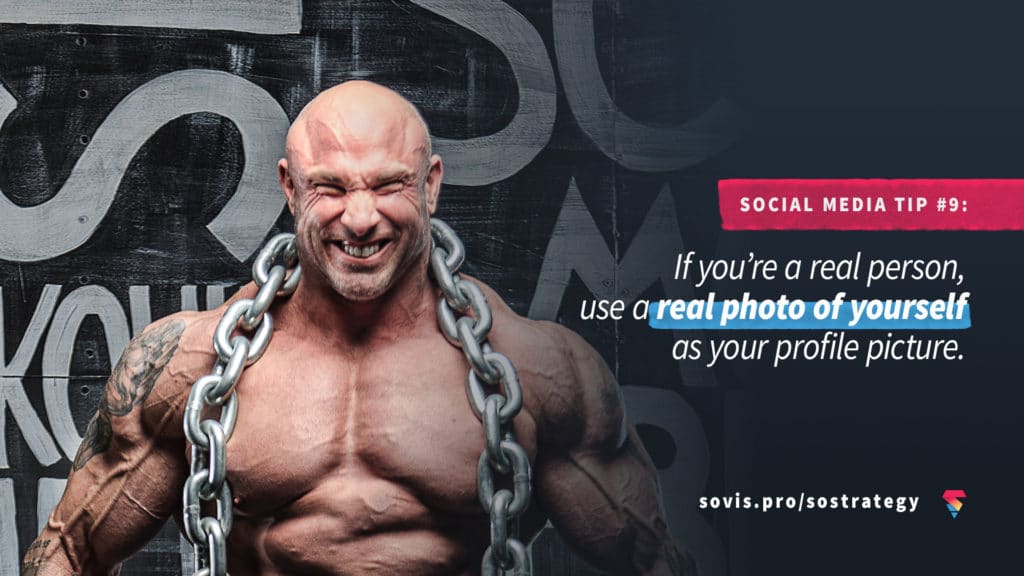
Twitter Posting Frequency
Twitter is what I refer to as a “high-volume” network. People tweet a lot throughout the day, and it’s culturally acceptable on that platform.
Retweets mainly happen within an hour of posting. After that crucial first hour, the tweet is most likely never to be seen again as it will be drowned out by the millions of other tweets happening every day. As such, it’s suggested to post on Twitter around 15 times a day.
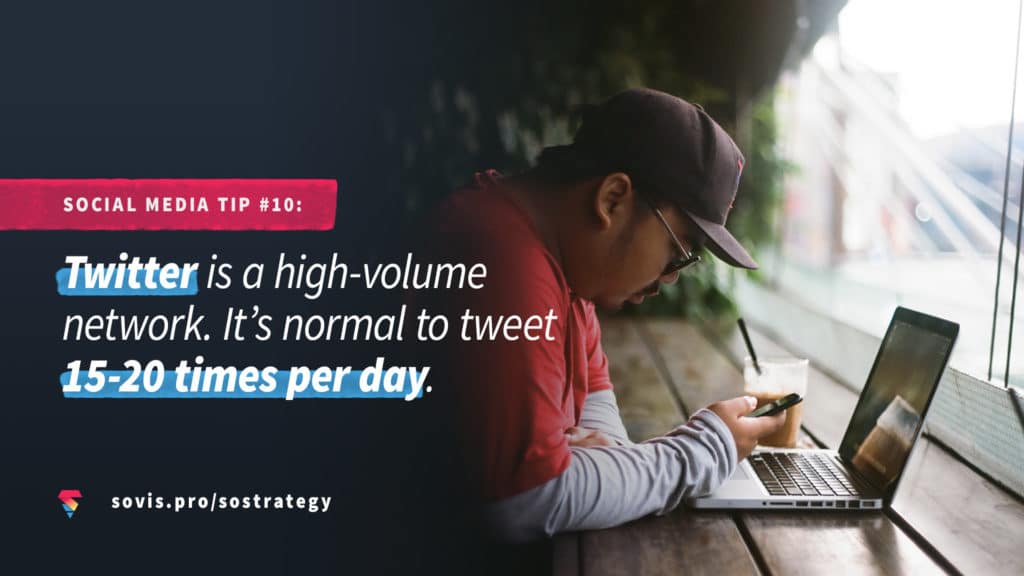
It’s no easy task to post that much. So, if you’re dead set on a Twitter presence even with your busy schedule, take a day and pre-schedule your posts for the month using a social media management tool.
Keep in mind, though, that you have to be reactive on Twitter because it moves at a mile per minute. To capitalize on the immediacy of a given trend or hashtag, you’ll always want to keep an ear in the pipeline–even with scheduled posts.
If you’re privy to your audience’s professional side on LinkedIn, you can really key in on prospective clients in a multitude of industries.
There are plenty of lucrative marketing opportunities. For example, you can target a specific workout routine to CEOs. Or, if you used to be a Real Estate Agent, you can cater niche workouts towards that industry.
You’ll have firsthand knowledge of the challenges faced when combining fitness with their career and they’ll trust you as an expert.
Again with the Bio
An effective LinkedIn profile starts with your summary–because that’s what potential clients first see when they visit your profile. You’re telling your story and highlighting your most significant professional qualifications and achievements.
Your profile picture is of the utmost importance. Unlike Facebook, Twitter, or Instagram, where you can be a bit more adventurous, LinkedIn requires a professional headshot. Investing in a photographer is a good idea. Only 9% of LinkedIn headshots are selfies, according to Forbes.
LinkedIn Posting Frequency
The LinkedIn audience is busy, and you shouldn’t exceed one post per day, says LocalVox.
You’ll also want to make sure that you’re posting items early in the day (pre-work hours) to get the maximum potential for exposure throughout the day.
Other Social Media Platforms
There are many other social networks that you could potentially use to grow your audience and reach new clients.
We’ve covered the most popular ones, but here are a couple more notworthy platforms.
87% of Pinterest’s 250 million monthly users have purchased a product or service through the platform.
Similar to Instagram, Pinterest as a visual medium offers plenty of ‘proof is in the pudding’ marketing benefits as a personal trainer.
However, you may be a bit too busy for Pinterest as you’re growing your business. Ahalogy suggests up to 30 posts or “pins” per day to get the best results.
That’s a 9-5 job in itself!
YouTube
Youtube has 1.9 billion active monthly users and is the most popular social media site for teens. If you’re looking to train high school athletes, YouTube video content may be the avenue for you.
That’s not to say there aren’t plenty of adults (myself included) searching for great workout videos on YouTube daily. So if you’re comfortable creating video content, YouTube may be a great place to build your audience.
If you’re not able to create your own videos, you can always share Youtube videos across your other social media accounts.
Bonus: Jump-start You Social Media Content
Trying to learn how to be great at social media marketing can be overwhelming. This is especially true if you’re already juggling clients on a daily basis.
To help you get a jump on posting attractive social media content, we’ve packaged together 10 high-quality graphics for you to use! Just add your name and email and we’ll send you the download link.
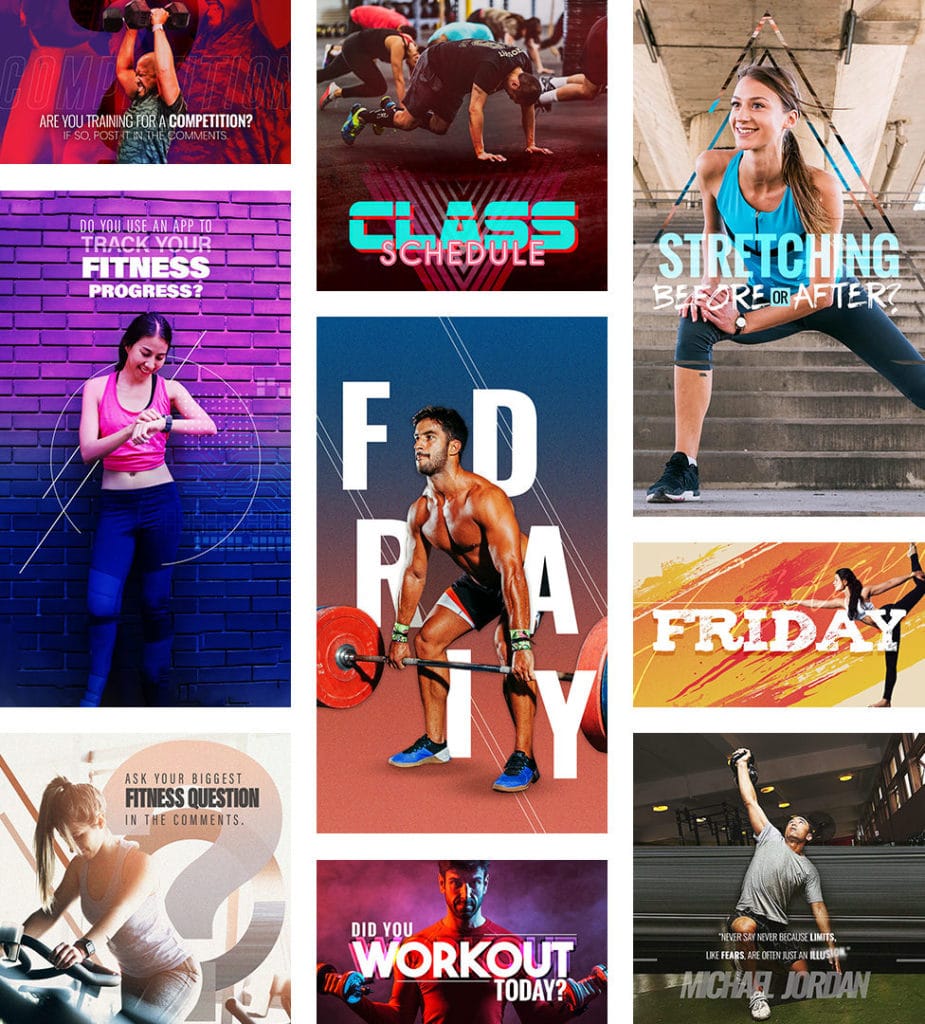
10 Free Social Media Graphics
Every month we send out ten hand-crafted fitness graphics that you can post on your social media profiles.
Conclusion
There are plenty of advantages social media can offer you as a personal trainer. You just have to follow the right practices, and your business will grow beyond your wildest dreams!
P.S. Pin this post to reveal the top-secret Social Media Tips Infographic!
Featured image courtesy of Mentatdgt via Shutterstock.

